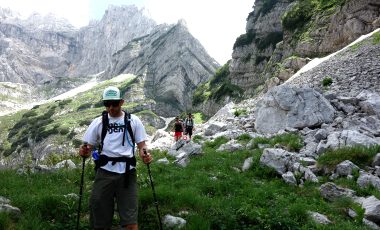There are countless ways to get out and enjoy nature. Hiking is one of the most accessible outdoor activities in terms of gear and experience level, but that depends on the type of hiking. Knowing your capabilities and limitations going into a hike, along with the difficulty of the hike itself, makes a big difference.
When we think of hiking, we often think of day hikes in the mountains, but is that the only option? As a beginner, day hikes are a great place to start, but there are many other types of hiking one can enjoy and grow into as one becomes more experienced outdoors. Or maybe you’ve been hiking for years and want to try a new approach. Below, we outline some of the most common (and not-so-common) types of hiking.
- Day Hiking
- Backpacking
- Base Camping
- Long Distance Hiking
- Section Hiking
- Fastpacking
- Summit Hiking
- Peak Bagging
- Bushwhacking
- Snowshoeing
Types of Hiking
Within the ten types of hiking outlined below, some subcategories may fall under other names. Hiking is a part of many other outdoor activities like mountaineering, rock climbing, and trail running. All different types of hiking can be done solo or in a group. Some of these may also allow for adaptive hiking, but not all. It depends on the level of trail access and disability of the said hiker. Adaptive hiking trails are often day hiking trails that have characteristics or have been maintained to allow persons with disabilities to enjoy them.
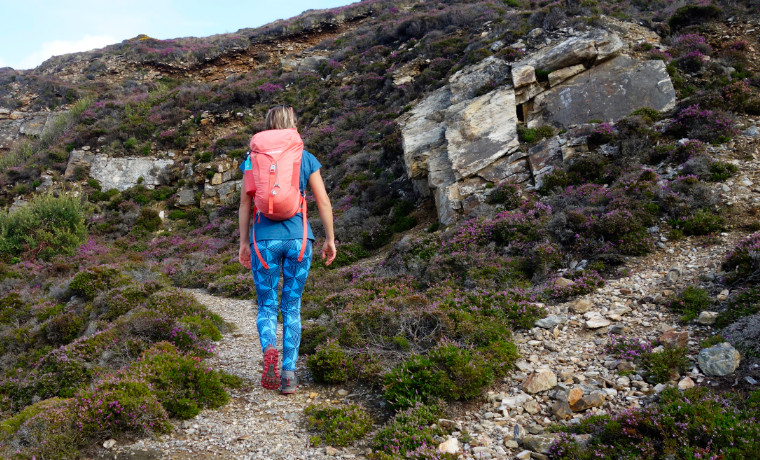
1Day Hiking
| Pros: | customisable, generally accessible |
| Cons: | you’ll want to do it daily! |
| Best for: | beginners – experienced hikers |
| Where to do it: | anywhere in the world |
| Equipment needed: | hiking shoes, daypack, appropriate clothing for climate, bottle of water |
Day hiking is likely the most accessible option on the list. It can mean different things to different people, and some folks may wonder if there is a difference between hiking vs. walking. In short, not really, but hiking implies that you’re walking in a completely natural environment. A neighbourhood walk is still great for your health, but hiking can often be more strenuous and involved since it is on a trail with varying terrain.
How you approach a day hike will vary depending on how much time you dedicate to that hike. For someone that hikes daily, they may only devote an hour to hiking, not a distance. Other people may be more interested in gauging according to distance. Your ability level, mixed with the types of hiking terrain, often determines whether it is a day hike. For instance, endurance hikers or trail runners may view 20 miles as a day hike while others prefer a 2-3 mile hike.
2Backpacking
| Pros: | more solitude, travel further distances, learn new skills |
| Cons: | requires more gear, physically demanding |
| Best for: | beginner – experienced hikers |
| Where to do it: | mountains, deserts, anywhere with a trail long enough |
| Equipment needed: | hiking boots or shoes, backpack, shelter, sleeping bag/pad, water filter, and more |
Backpacking is multi-day hiking that involves carrying all of the equipment you need on your back. That equipment can include your sleeping gear, cooking equipment, clothing, food, and shelter. This type of backcountry hiking often leads you to more remote areas of the wilderness than day hiking because you have more time to cover more ground.
Backpacking can be an umbrella term for several other types of hiking, including thru-hiking, section hiking, base camping, overnight hiking, weekend hiking, and hut-to-hut hiking. Another subtype of backpacking is ultralight backpacking, which is the same concept but with a minimalistic approach to gear.
The main difference between backpacking vs. hiking (or day hiking) is that you plan to sleep overnight for at least one night and carry all the gear you need. Backpacking differs from other types of camping because it requires the ability to pack light enough to hike to a destination with all of your equipment. The kind of hiking trails you choose for backpacking often determines the time it takes to complete.
3Base Camping
| Pros: | combine backpacking and day hiking |
| Cons: | often don’t travel as far |
| Best for: | beginner – experienced hikers |
| Where to do it: | most places you can backpack, mountain summits |
| Equipment needed: | all backpacking equipment |
Base camping is very common among mountaineers and for summit hiking, but it can also be done for other backpacking expeditions. Base camping requires the hiker to carry all the gear they need for the beginning portion of the hike, but once they reach their camp, they set up and then spend the rest of the trip either day hiking or climbing. Base camping allows hikers to spend more time in an area, acclimate to the elevation, and tackle larger peaks.
The easiest way to think of base camping is a home away from home while you are backpacking. You hike into an area, set up camp, and that is your campsite for the remainder of your trip. Base camping is also very common for hunting and can be called a truck or spike camp.

4Long Distance Hiking
| Pros: | intimate method of travel, meet like minded people, builds self confidence |
| Cons: | takes a lot of time, physically and psychologically demanding |
| Best for: | intermediate – experienced hikers |
| Where to do it: | PCT, AT, CDT, Long Trail, and more |
| Equipment needed: | all backpacking equipment |
Long distance hiking may be more commonly known as thru-hiking. Thru hiking is hiking a trail to completion, and long distance hiking is any long distance trail, meaning section hiking could be classified as long distance hiking. In short, it is backpacking for any extended period of time; generally, any trail over 100 miles done in one go is considered long distance hiking.
These trails can be found worldwide, including the Pacific Crest Trail, Camino de Santiago, Tour du Mont Blanc, and Annapurna Circuit. Long distance hiking draws people from all backgrounds to experience the wilderness in new, more intimate ways. It can be physically and psychologically challenging to complete an entire thru-hike, but many who do it build community and confidence in themselves.
5Section Hiking
| Pros: | complete thru-hikes on your own time |
| Cons: | takes a lot of planning |
| Best for: | beginner – experienced hikers |
| Where to do it: | anywhere with a thru-hike |
| Equipment needed: | all backpacking equipment |
Section hiking is a way many people hold a job while also finishing a long-distance hiking trail. While there is some disagreement about what exactly section hiking means once the trail is complete, it involves breaking a long distance trail down into smaller sections. Then, you complete those sections one at a time as your schedule allows. Section hiking is still a type of backpacking, requiring all the same equipment and knowledge.
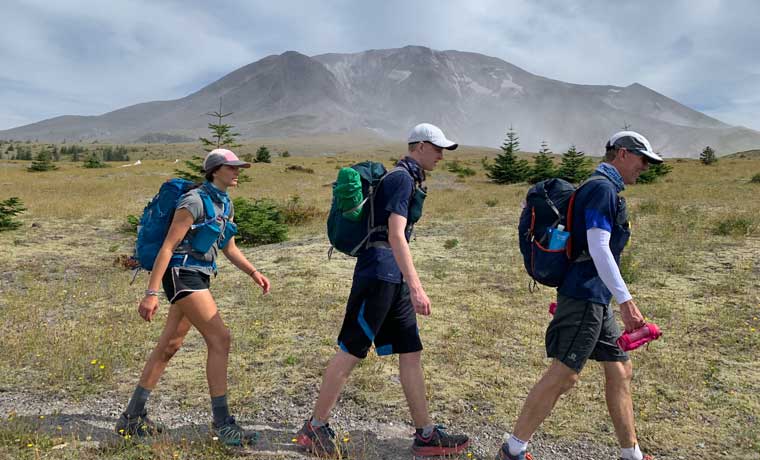
6Fastpacking
| Pros: | cover more mileage faster |
| Cons: | requires high levels of endurance |
| Best for: | intermediate – experienced hikers |
| Where to do it: | anywhere with distance hiking trails |
| Equipment needed: | ultralight backpacking equipment |
Fastpacking can be seen as a combination of trail running and ultralight backpacking. The goal is to cover more miles in a shorter time. It is often done to complete long distance trails, but it can be done on any backpacking trail. Most fastpackers split their time between trail running and power hiking. Since the goal is to move quickly, ultralight gear is ideal.
For shorter trails, only a day pack is required. However, if you are in the true spirit of fastpacking, the distance you intend to cover requires spending a few nights in the backcountry. To achieve this, hikers carry ultralight tents, packs, and often only eat either cold soak or dry foods to cut down their pack weight more. Fastpacking takes a fair amount of training, knowledge, and equipment to safely approach, but it can be a fun way to test your limits and skills in the backcountry.
7Summit Hiking
| Pros: | great views, can be a day hike |
| Cons: | strenuous, elevation changes, tough terrain |
| Best for: | intermediate – experienced hikers |
| Where to do it: | anywhere with mountains |
| Equipment needed: | depends on the type of summit |
Summit hiking is essentially hiking up a mountain. Depending on where you live, the height of the peak will vary. For instance, hikers that live in Colorado may be familiar with 14ers, while on the east coast of the United States, it is more common for a summit hike to be a 4000-footer. In Scotland, summiting a Munro means hiking up mountains which are over 3000 feet. A mountain summit is difficult no matter where you are, but there are variations in challenges.
Some summits are very beginner friendly and have well-maintained trails. Other summits may require knowledge of some mountaineering skills, rock scrambling, and base camping before the actual summit is attempted. Match the type of summit hike to your ability level, and you are in for a treat. Summits are an excellent way to push your limits, test your endurance, and experience unparalleled views.
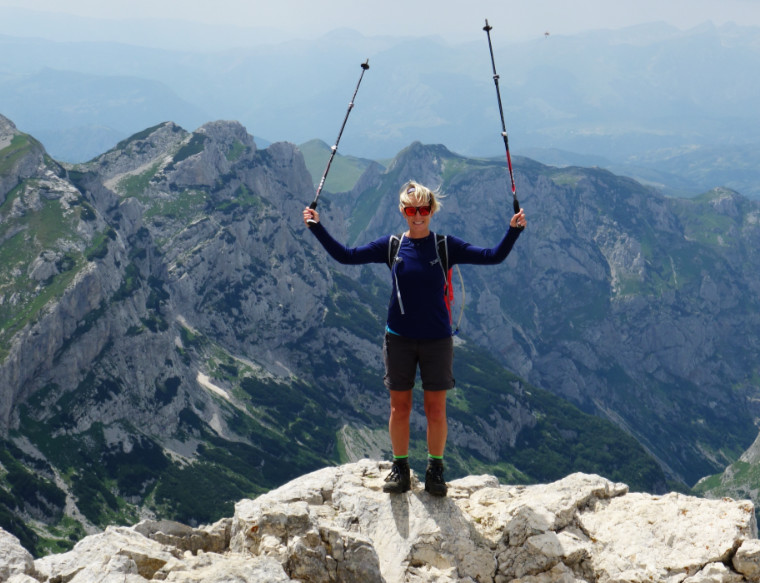
8Peak Bagging
| Pros: | goal-oriented, a good challenge |
| Cons: | requires high levels of endurance |
| Best for: | intermediate – experienced hikers |
| Where to do it: | anywhere with mountains |
| Equipment needed: | varies on types of summits |
Peak bagging can be seen as an extension of summit hiking. Think of peak bagging as a way to string several summits together, all at once or over time. These hikers will often have a pre-determined list of peaks they plan to mark off their list. While there is some contention about the definition of peak bagging, it can be done all at once in some areas, which pairs well with fastpacking or long-distance hiking. Other hikers take the list and check the summits off over time to achieve an overall goal. Many endurance hikers utilise peak bagging to create new routes or set new speed records.
9Bushwhacking
| Pros: | can be an exciting adventure, a way to explore new areas |
| Cons: | requires more backcountry knowledge and route-finding skills |
| Best for: | experienced hikers |
| Where to do it: | wilderness areas |
| Equipment needed: | all backpacking equipment |
Bushwhacking is when a hiker travels through wild backcountry where no designated trail exists. Certain outdoor activities, such as hunting, require more bushwhacking than others and, depending on where you are in the world, may require specific equipment. When bushwhacking, solid knowledge of the area, backcountry survival skills, and navigation are necessary. It is easy to get lost when there is no trail to follow, so know your limits or this type of hiking can quickly become dangerous.
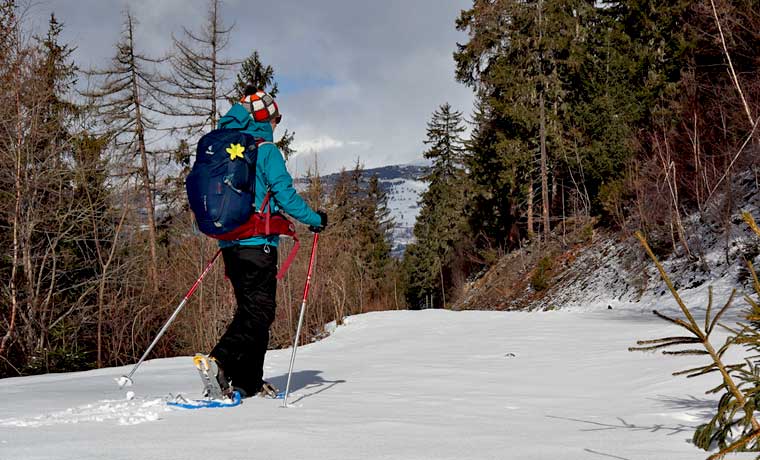
10Snowshoeing
| Pros: | hike into remote areas all winter long |
| Cons: | cold, requires extra equipment |
| Best for: | beginners – experienced hikers |
| Where to do it: | anywhere with snowy trails |
| Equipment needed: | snowshoes, hiking poles, proper winter apparel |
Snowshoeing is an extension of winter hiking. Winter hiking is simply hiking in the winter. While this can be done on its own or with traction aids, snowshoeing tends to be a more enjoyable experience on snowy trails or crossing frozen lakes. All you need is a pair of snowshoes, winter apparel and hiking poles, and you can enjoy the snow-covered trails without post-holing your way through them. It may not be necessary to wear snowshoes for all winter hiking endeavours, but if you are an avid hiker and want to do it year-round, it doesn’t hurt to have some on hand.
No matter where you are or what your abilities, hiking is an easy activity to try for the first time. But the the various types of hiking also make it an excellent activity to use to push your limits and develop your wilderness skills and experience further.
Happy wandering, happy hikers!


